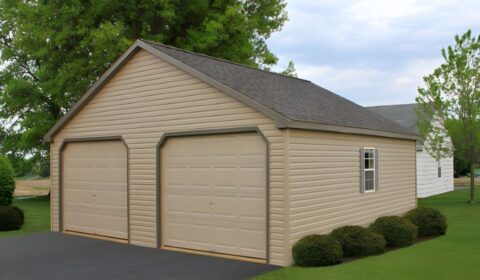Understanding the distinctions between twin and double beds is essential when selecting the perfect bed. These terms often cause confusion, especially since their meanings can vary between regions. This comprehensive guide will delve into the differences, advantages, and considerations of twin bed vs double bed, helping you make an informed decision about your sleeping space.
Understanding Twin Beds
A twin bed, commonly known as a single bed in the UK, is designed for one person. Standard dimensions are approximately 90 cm in width and 190 cm in length (3 feet by 6 feet 3 inches). Due to their compact size, these beds are prevalent in children’s rooms, guest rooms, and smaller spaces.
Key Features of Twin Beds:
- Space-Saving Design: Ideal for smaller rooms or shared spaces with multiple beds.
- Versatility: Can be used in various settings, including bunk beds, daybeds, and trundle beds.
- Affordability: Generally more budget-friendly due to their smaller size.
Understanding Double Beds
A double bed, or a full-size bed, is intended to accommodate two people. Standard dimensions are approximately 135 cm in width and 190 cm in length (4 feet 6 inches by 6 feet 3 inches). While offering more width than a twin bed, double beds may still be snug for two adults, making them a popular choice for single sleepers desiring extra space.
Key Features of Double Beds:
- Increased Width: Provides more personal space compared to a twin bed.
- Suitability for Couples: Double beds can accommodate two people while cosier than larger bed sizes.
- Ideal for Medium-Sized Rooms: Balances space efficiency with comfort.
Twin Bed vs. Double Bed: Comparative Overview
Understanding the distinctions between twin and double beds is crucial for selecting the right fit for your needs.
| Feature | Twin Bed (Single Bed) | Double Bed (Full-Size Bed) |
| Width | ~90 cm (3 feet) | ~135 cm (4 feet 6 inches) |
| Length | ~190 cm (6 feet 3 inches) | ~190 cm (6 feet 3 inches) |
| Sleeper Capacity | 1 Person | 1-2 persons |
| Room Suitability | Small rooms, children’s rooms, guest rooms | Medium-sized rooms, guest rooms |
| Cost | Generally lower | Slightly higher |
Factors to Consider When Choosing Between Twin and Double Beds
- Room Size:
- Twin Bed: Ideal for compact spaces where maximizing floor area is essential.
- Double Bed: Requires more space; ensure the room can accommodate the bed and allow comfortable movement.
- Number of Occupants:
- Twin Bed: Suited for single sleepers, including children and teenagers.
- Double Bed: This can accommodate two people but may be snug for some couples.
- Purpose and Usage:
- Twin Bed: Perfect for guest rooms, children’s rooms, or as part of a bunk bed setup.
- Double Bed: Suitable for single adults desiring more space or couples comfortable with close quarters.
- Budget:
- Twin Bed: Typically more affordable in terms of the bed frame and mattress.
- Double Bed: Slightly higher cost due to larger size.
Regional Terminology and Variations
It’s important to note that bed size terminology can vary by region, leading to potential confusion:
- United Kingdom:
- Twin Bed: Often referred to as a single bed.
- Double Bed: Standard term for a bed accommodating two people.
- United States:
- Twin Bed: Standard term for a single-person bed.
- Double Bed: Also known as a full-size bed.
Understanding these regional differences ensures clear communication, especially when purchasing beds or bedding internationally.
Alternative Bed Sizes to Consider
Depending on your specific needs, alternative bed sizes might be more suitable:
- Twin XL: Offers additional length (approximately 200 cm or 6 feet 6 inches) while maintaining the width of a twin bed; ideal for taller individuals.
- Queen Size: Measures around 150 cm in width and 200 cm in length (5 feet by 6 feet 6 inches); provides more space for couples.
- King Size: Offers ample space at approximately 180 cm in width and 200 cm in length (6 feet by 6 feet 6 inches); suitable for those desiring maximum space.
Conclusion
Choosing between a twin bed and a double bed depends on various factors, including room size, number of occupants, and personal preferences. By understanding the dimensions and features of each, you can select the bed that best fits your needs, ensuring comfort and a good night’s sleep.
Remember to consider regional terminology and variations when making your decision, especially if purchasing internationally. With the right choice, your bed will provide a comfortable and restful retreat tailored to your specific requirements.
Read More Blogs At: The Home Designer
Frequently Asked Questions
Can two adults comfortably sleep in a double bed?
A double bed can accommodate two adults, but it may feel snug. A queen or king-size bed might be a better option if you prefer extra space.
Is a twin bed the same as a single bed?
Yes, a twin bed is commonly called a single bed in the UK. However, in the US, "twin" is the standard term for this size.
Which bed size is better for a guest room?
A twin bed is ideal for compact guest rooms or children's rooms, while a double bed is better suited for accommodating couples or providing extra comfort for single sleepers.
Does bedding size differ between twin and double beds?
Yes, twin beds require smaller sheets and duvets compared to double beds. Always check dimensions before purchasing bedding to ensure a proper fit.





